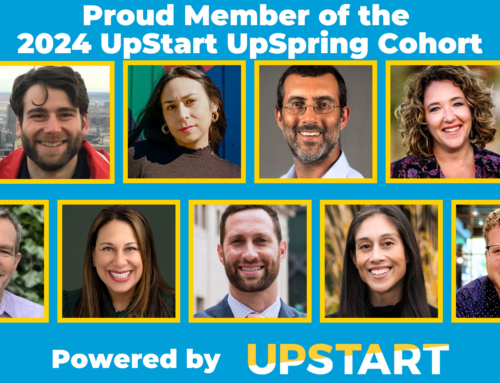An article from eJewish Philanthropy
Though the term innovation has become an overused buzzword in both the Jewish and general worlds, it nonetheless has become apparent that, like people, organizations need to continually progress in order to survive and thrive. What remains elusive, though, is how to focus resources and energy on growth and change initiatives in order to render them successful.
In a recent article entitled Managing your Innovation Portfolio in the Harvard Business Review, authors Bansi Nagji and Geoff Tuff present a formula for allocating resources towards innovation, which they argue is necessary for those companies that wish to flourish in the long term. They explain that, for most companies, innovation is most successful when 70% of resources are allocated to innovations related to the companys core business; 20% to adjacent, related areas; and 10% to transformational initiatives. In the first two realms, it is critical to have talent with good analytical skills, so as to interpret and translate customer data into specific offering enhancements. In the third realm, it is necessary to have talent that can creatively uncover and analyze changing social needs, market trends, and technological changes. They then reveal a startling statistic; the ratio of distribution of return on investment is the exact inverse of the resource allocation ratio: there is a 70% return on investment in transformational innovations; 20% return on investment in adjacent innovations; and 10% return on investment in innovations to the core.
Granted, this data is derived from the commercial sector. But I believe that this approach can be both relevant and helpful to the Jewish world, and can be translated not only for particular organizations and structural entities, but also to Jewish organizational life as a whole. We can look at Jewish life as a cohesive structure, with the shared mission of engaging Jews in meaningful Jewish life, and sharing enriching Jewish values with the world at large. The astronomical growth of the Jewish Innovation Sector over the past ten years is evidence of the allure of transformational innovations, which have successfully attracted new audiences to creative Jewish experiences, and garnered funds, support, and attention from the Jewish community at large over the past ten years. These innovations, led by inventive thinkers, and creatively meeting the needs of a population of Jews that were uninspired by existing offerings, have indeed brought tremendous benefits to the Jewish community at large, and are clear evidence of the importance of the transformational realm.
But transformational innovations can be successful only within a context of continual innovation and growth to core programs, and those adjacent spin-offs that closely relate to them. Nagji and Tuff warn against lurching toward transformational, rather than incremental, innovations. They write: rather than hoping that their future will emerge from a collection of ad hoc, stand-alone efforts that compete with one another for time, money, attention, and prestige, [successful companies] manage for total innovation. The Jewish world could benefit from being perceived of and managed as a unified entity with a clearly defined innovation portfolio, with the right balance of core, adjacent, and transformational initiatives across the enterprise as a whole. Instead of seeing the Jewish innovation sector as a stand-alone entity competing with the establishment for people and funds, the innovation sector should be seen as an instrumental fragment of the whole, which benefits from their ingenuity, and which must be vibrant and flexible if it is to achieve the communal shared vision and set of outcomes.
This means that the communitys core structures synagogues, schools, JCCs, camps, Federations need to acknowledge the importance of ongoing innovation, learn core mindsets and skill-sets that will allow them to innovate successfully, and dedicate themselves to the ongoing process of identifying and creatively meeting the needs of their constituents. Nagji and Tuff define innovation as a novel creation that produces value as slight as a new nail polish color or as vast as the World Wide Web. Innovation does not have to be an all-encompassing, strategy-disrupting concept. It is merely a term for a set of behaviors that allow organizations to continue to produce value. Our communitys core structures must ensure that they are meeting the needs of their constituents, and that their methodologies and programs are vibrant. Most often, this translates into ensuring that core programs are stellar. Next, it translates into logical next steps, adjacent innovations closely related to the core, which expand the core offerings. Finally, it translates into support for transformational initiatives, which have the potential to bring Jewish life abundant vibrancy.
It would behoove us as a Jewish professional community to think about the shared desired outcomes of our work, and to explore the 70-20-10 innovation ratios not only within our organizations, but also within our system as a whole. Organizations should dedicate resources and staff accordingly. Foundations should play with this ratio in their funding, supporting core, adjacent, and transformational activities, and should be in dialogue with one another to ensure that the resource allocation in the system as a whole is well balanced. Perhaps this type of thinking can help ensure the continued vitality and growth of Jewish life.
Maya Bernstein is an associate at UpStart.
Our purpose is to enable entrepreneurs to bring bold Jewish ideas to light. We help them reach Up to people in new ways that are meaningful, more inclusive, and create a brighter future for our Jewish community and the world we share.




